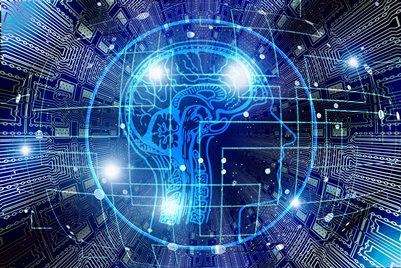Course Details
Home / Public Courses / Course Details
Advanced Neural Networks, Deep Learning and MLOps for Upstream Professionals (RES77)
1-5 December 2024 5 days Doha, QatarCourse Fee: 5350 USD
Computer Fee: 350 USD
Description
This highly practical course is designed to equip a participant with a comprehensive understanding and solid practical knowledge of main Deep Learning algorithms including Reinforcement Learning, Generative Adversarial Networks (GAN) and Large Language Models (LLM). Through a well-balanced combination of theory deep dives and hands-on exercises using real-world Oil & Gas datasets, a participant will acquire the necessary skills to confidently leverage new knowledge and the full potential of Deep Learning, effectively addressing day-to-day Oil & Gas problems.
COMPUTER REQUIREMENTS:
Course Level: Advanced
Instructor: Vitali Molchan
COMPUTER REQUIREMENTS:
- Minimum Specifications: Participants are required to have access to modern laptops or PCs with a minimum of 8 GB of RAM and at least 30 GB of free disk space.
- Recommended Specifications: For optimal performance, it is recommended that participants use a computer with 16 GB or more of RAM and maintain 30 GB of free disk space.
Course Level: Advanced
Instructor: Vitali Molchan

Designed for you, if you are...
- A reservoir engineer, geologist, petrophysicist, production or drilling engineer with prior programming experience and basic knowledge of data science and machine learning who wants to obtain a solid understanding of neural networks, deep learning and machine learning operations (MLOps)
Prerequisite:
- Participants should have strong domain knowledge with a minimum of 5 years of experience
- Participants should have prior programming experience
- Prior experience in data science and machine learning is an advantage. If a participant does not have basic knowledge of data science and machine learning, it is recommended to attend the following course:
Applied Machine Learning and Data Science for Upstream Professionals.
How we build your confidence
- The main Deep Learning algorithms will be thoroughly discussed and accompanied by numerous reusable code examples based on real-world Oil & Gas data sets
- MLOps concepts will be discussed to guide the development of comprehensive end-to-end ML solutions including tasks from project scoping to model serving and building a graphical user interface
The benefits from attending
By the end of the course, you will get a robust comprehension of:- Opportunities identification for applying Deep Learning methods in your professional domain
- Sound decision-making in selecting the most suitable machine learning methods for solving specific problems
- Core Deep Learning algorithms and their implementation using TensorFlow and Keras libraries
- Practical application of main machine learning methods in real-world Oil & Gas scenarios
Topics
Day 1:Topics:
- Introduction to Deep Learning and TensorFlow ecosystem
- Machine learning 101
- Introduction to MLOps
- Deep Feed Forward neural networks
Exercises:
- Machine learning project setup
- Production forecast for unconventional reservoirs
- Reservoir fluids saturation pressure forecast
- Lithofacies identification
You will learn how to:
- Set up a machine learning project to ensure the reproducibility and model accuracy
- Use version control, docker, and code templates to streamline the model development and deployment into production
- Construct Deep Feed Forward neural networks using the TensorFlow and Keras framework
- Use various approaches to improve the accuracy of the Deep Learning models
- Explain the prediction of the Deep Learning models
Day 2:
Topics:
- Time-series modelling
- Anomaly detection
- Bayesian neural networks and Probabilistic Forecasting
- MLOps: data pipelines, hyperparameters tuning and tracking modelling experiments
Exercises:
- Predictive maintenance of the Electrical Submergible Pumps (ESP)
- Production forecasting for the unconventional reservoirs
- Anomalies detection in production well behaviours
You will learn how to:
- Improve utilization of the Electrical Submersible Pump (ESP) using predictive maintenance
- Detect non-stationary production regimes in production and injection wells
- Perform a probabilistic production forecasting for unconventional oil and gas reservoirs
- Build robust data pipelines to ensure the Deep Learning model quality
- Define the best architecture of the Deep neural network, perform hyperparameters tuning and track the modelling experiments
- Serve the Deep Learning models in production
Day 3:
Topics:
- Deep convolutional neural networks
- Object detection models
- Image segmentation models
- MLOps: Deep Learning model serving
Exercises:
- Sucker-rod pump performance monitoring
- Microfacies classification based on thin section images
- Object detection based on satellite images
You will learn how to:
- Monitor the sucker-rod pump performance using automatic interpretation of the dynamogram data
- Detect petrographic microfacies based on thin-section images
- Detect wells, pipelines, tanks, oil spills and other objects of interest in the satellite image data
Day 4:
Topics:
- Text classification
- Named Entity Recognition (NER)
- Text summarization
- Large Language Models (LLM)
- MLOps: building the interface for a deep learning model and dashboarding
Exercises:
- Developing Oil & Gas word embeddings
- Classification of journal articles
- Creating a Named Entity Recognition (NER) model to detect Oil & Gas-related vocabulary
- Generating abstracts to summarize the journal articles
You will learn how to:
- Classify the text documents (reports, articles, etc.) based on certain topics
- Identify a certain type of information within text documents
- Create a summary of large text documents
- Extract the knowledge for a large number of unstructured text documents
- Use pre-trained Large Language Models for NLP modelling
- Build a graphical user interface (GUI) to simplify deep learning model usage
Day 5:
Topics:
- Reinforcement learning
- Generative AI: Generative Adversarial Networks (GANs)
Exercises:
- Optimal well placement
- Generating synthetic well data
You will learn how to:
- Perform the optimal well placement using reinforcement learning
- Generate synthetic well data (well logs, core images, sensor data, etc.) to improve downstream model accuracy
© All rights reserved
HOT Engineering GmbH Tel: +43 3842 43 0 53-0 Fax +43 3842 43 0 53-1 hot@hoteng.com
